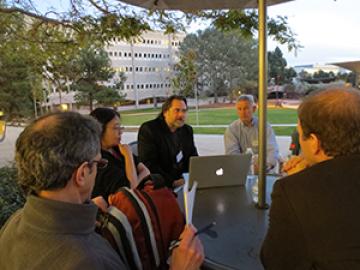Filter News
Area of Research
- (-) Materials Synthesis from Atoms to Systems (3)
- (-) Neutron Science (3)
- Advanced Manufacturing (1)
- Biological Systems (3)
- Biology and Soft Matter (1)
- Building Technologies (1)
- Chemistry and Physics at Interfaces (1)
- Clean Energy (5)
- Computational Biology (1)
- Energy Frontier Research Centers (2)
- Functional Materials for Energy (3)
- Geographic Information Science and Technology (1)
- Materials (19)
- Materials for Computing (1)
- Materials Under Extremes (1)
- Nuclear Science and Technology (4)
- Nuclear Systems Technology (1)
- Supercomputing (4)
News Type
News Topics
Media Contacts

For more than 50 years, scientists have debated what turns particular oxide insulators, in which electrons barely move, into metals, in which electrons flow freely.

The Department of Energy’s Oak Ridge National Laboratory concluded a series of workshops this month that engaged scientists from around the country to identify grand scientific challenges and how they might be addressed through application of neutron science.

Neutron scattering research at the Department of Energy’s Oak Ridge National Laboratory has revealed clear structural differences in the normal and pathological forms of a protein involved in Huntington’s disease.

A simple new technique to form interlocking beads of water in ambient conditions could prove valuable for applications in biological sensing, membrane research and harvesting water from fog.

Researchers at the Department of Energy’s Oak Ridge National Laboratory have developed a new and unconventional battery chemistry aimed at producing batteries that last longer than previously thought possible.

Treating cadmium-telluride (CdTe) solar cell materials with cadmium-chloride improves their efficiency, but researchers have not fully understood why.




